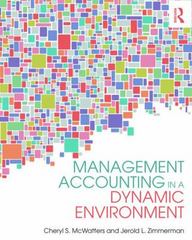Answered step by step
Verified Expert Solution
Question
1 Approved Answer
14-4. (Financial forecastingpercent of sales) Tulley Appliances Inc. projects next years sales to be $20 million. Current sales are $15 million, based on current assets
14-4. (Financial forecastingpercent of sales) Tulley Appliances Inc. projects next years sales to be $20 million. Current sales are $15 million, based on current assets of $5 million and fixed assets of $5 million. The firms net profit margin is 5 percent after taxes. Tulley forecasts that its current assets will rise in direct proportion to the increase in sales, but that its fixed assets will increase by only $100,000. Currently, Tulley has $1.5 million in accounts payable (which vary directly with sales), $2 million in long-term debt (due in 10 years), and common equity (including $4 million in retained earnings) totaling $6.5 million. Tulley plans to pay $500,000 in common stock dividends next year. a. What are Tulleys total financing needs (i.e., total assets) for the coming year? b. Given the firms projections and dividend payments plans, what are its discretionary financing needs? c. Based on your projections, and assuming that the $100,000 expansion in fixed assets will occur, what is the largest increase in sales the firm can support without having to resort to the use of discretionary sources of financing? 15-8. (Cost of accounts receivable) Johnson Enterprises Inc. is involved in the manufacture and sale of electronic components used in small AM/FM radios. The firm needs $300,000 to finance an anticipated expansion in receivables due to increased sales. Johnsons credit terms are net 60, and its average monthly credit sales are $200,000. In general, the firms customers pay within the credit period; thus, the firms average accounts receivable balance is $400,000. Chuck Idol, Johnsons comptroller, approached the firms bank with a request for a loan for the $300,000 using the firms accounts receivable as collateral. The bank offered to make a loan at a rate of 2 percent over prime plus a 1 percent processing charge on all receivables pledged ($200,000 per month). Furthermore, the bank agreed to lend up to 75 percent of the face value of the receivables pledged. a. Estimate the cost of the receivables loan to Johnson when the firm borrows the $300,000. The prime rate is currently 11 percent. b. Idol also requested a line of credit for $300,000 from the bank. The bank agreed to grant the necessary line of credit at a rate of 3 percent over prime and required a 15 percent compensating balance. Johnson currently maintains an average demand deposit of $80,000. Estimate the cost of the line of credit to Johnson. c. Which source of credit should Johnson select? Why? 16-9. (Interest rate risk) Two years ago your corporate treasurer purchased for the firm a 20-year bond at its par value of $1,000. The coupon rate on this security is 8 percent. Interest payments are made to bondholders once a year. Currently, bonds of this particular risk class are yielding investors 9 percent. A cash shortage has forced you to instruct your treasurer to liquidate the bond. a. At what price will your bond be sold? Assume annual compounding. b. What will be the amount of your gain or loss over the original purchase price? c. What would be the amount of your gain or loss had the treasurer originally purchased a bond with a 4-year rather than a 20-year maturity? (Assume all characteristics of the bonds are identical except their maturity periods.) d. What do we call this type of risk assumed by your corporate treasurer? 16-13. (Ratio analysis) Assuming a 360-day year, calculate what the average investment in inventory would be for a firm, given the following information in each case. a. The firm has sales of $600,000, a gross profit margin of 10 percent, and an inventory turnover ratio of 6. b. The firm has a cost-of-goods-sold figure of $480,000 and an average age of inventory of 40 days. c. The firm has a cost-of-goods-sold figure of $1.15 million and an inventory turnover rate of 5. d. The firm has a sales figure of $25 million, a gross profit margin of 14 percent, and an average age of inventory of 45 days
Step by Step Solution
There are 3 Steps involved in it
Step: 1

Get Instant Access to Expert-Tailored Solutions
See step-by-step solutions with expert insights and AI powered tools for academic success
Step: 2

Step: 3

Ace Your Homework with AI
Get the answers you need in no time with our AI-driven, step-by-step assistance
Get Started


